
This is a very long and boring article which will only be of interest to the real nerds, like the author is.
Social Media Advice on Food
The well meaning but ill-informed individuals on social media have decided the following foods are never to be fed to tropical fish or to only be fed occasionally:
- Bloodworms
- Blackworms
- Tubifex worms
- Grindal Worms
- Earthworms
- Krill
- Brine Shrimp
- Clams
- Mussels
- Crickets
- Fish Meal
- Cold water, “high thiaminase”, fish
- Tilapia filets
- Beef Heart
- Chicken
- Meat byproducts
- Any land animal meat
- Meat from warm blooded animals
- High protein food
- High fat food
- Freeze dried Food
- Frozen food
Mythbuster:
.
ALL these foods are fine to feed ALL tropical fish
.
To establish that a food is bad for the fish there is a scientific method that is followed. This method has been used for many years in hundreds of millions of dollars of research in commercial aquaculture of fish such as tilapia, trout and salmon. Whole books have been written on the subject.
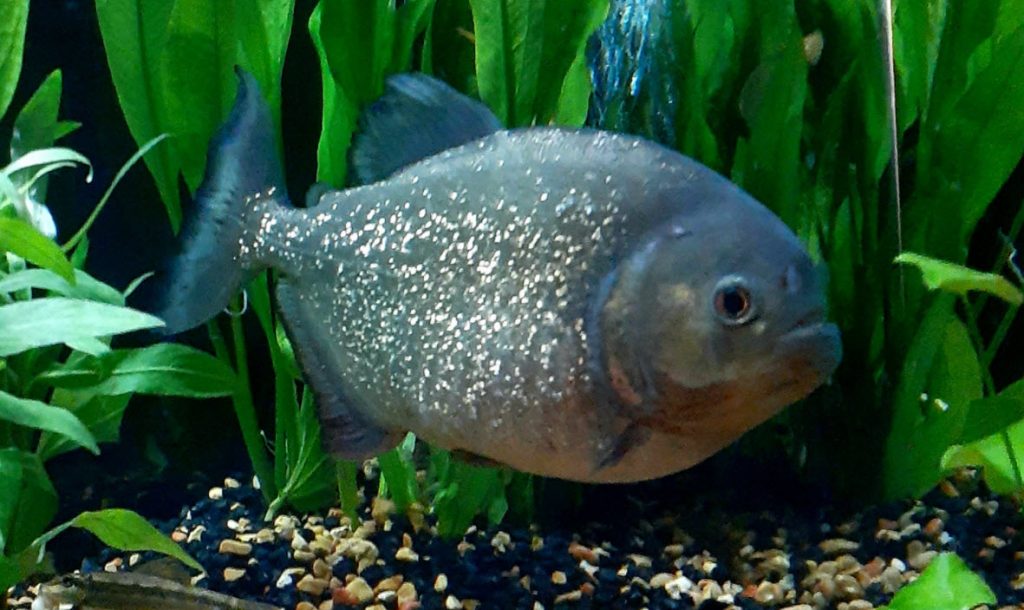
This article reviewed many research books on fish nutrition:
- “Fish Nutrition and Feed Technology”, Garg, 2018
- “Tilapias, Biology and Exploitation”, K. Jauncy (2000)
- “Principles of Fish Nutrition”, W. Steffens (1989)
- “Practical Manual on Fish Nutrition and Feed Technology”, Jain, 2018
- “Nutrient Requirements of Warmwater Fishes”, Wittwer, et. al. 1977
- “Fish Nutrition”, John Halver 1972
- “Fish Nutrition and Feed Technology: A Teaching Manual”, Felix, 2012
- “Introduction to the General Principles of Aquaculture”, Ackefors et. al. 1994
- “The Biology of Fish Growth”, Weatherly, Gill 1987
- “Environmental Biology of Fishes”, Jobling 1999
- “The Physiology of Fishes”, Evans, Claiborne 2006
- “The Physiology of Tropical Fishes”, Val, et. al. 2006
- “Nutrition & Feeding of Fishes”, Raghunath, 2012
These books all referenced thousands of various research papers.
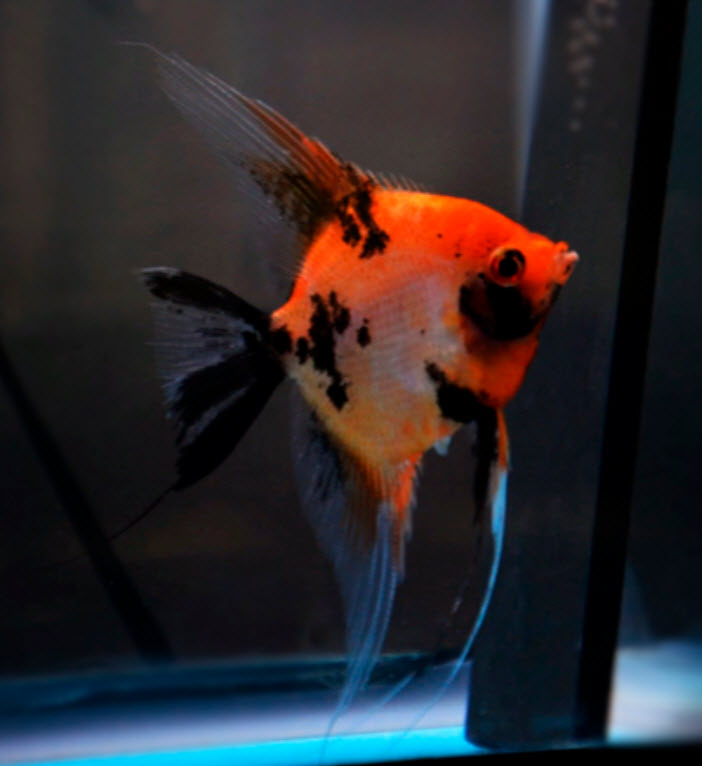
As the basis for the thousands of studies which make up the basis for these books, many fish are fed a given food for their lifetime and the progress of the fish charted.
Since even a 1% slower growth rate is significant for the low profit margin world of fish farming, there have been many things found which impact the growth rate of fish. For instance some fish digest chitin and some fish don’t digest chitin. So slight differences are noticed in fish fed chitin. But per this type of research the only foods which can SIGNIFICANTLY impact the HEALTH of adult fish is foods which have:
- less than 30% protein
- more than 40% of the protein come from cheap vegetables
- more than 50% grains and starches in them.
So foods like corn, rice, carrots, or fruit , having less than 30% protein and more than 50% carbohydrates, should be fed only occasionally. And having 40% or more of the protein come from vegetables such as soybeans, potatoes or wheat gluten can cause some slight problems with all fish.
For breeding fish and raising fry it is best to have food with greater than 40% protein, 10% fat and some “whole fish” or “fish meal” which contain fish bones. But for most fish it is not critical.
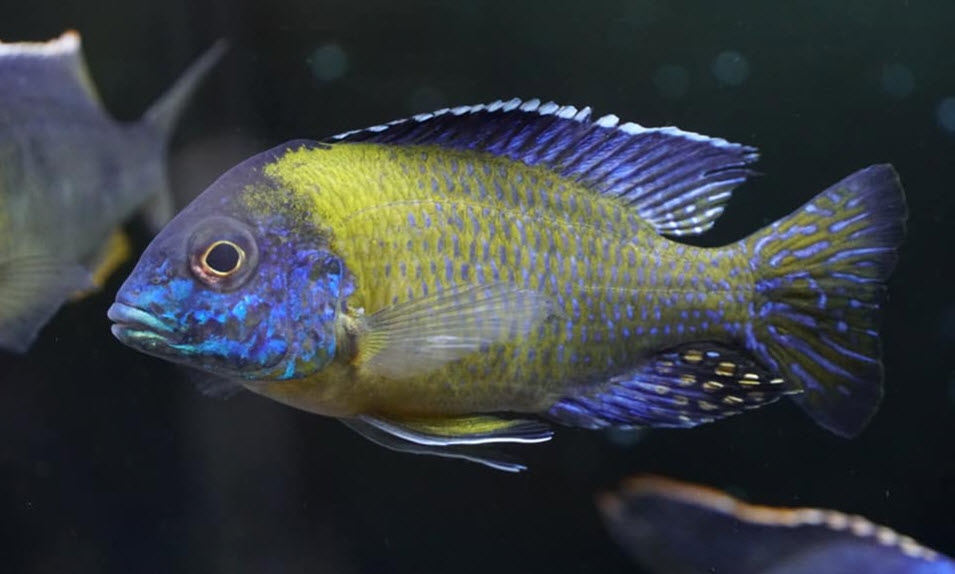
The Profit Motive
Making dry commercial tropical fish food is a market of some 750 million dollars. The author has personally been “called out” and personally attacked for daring to question the idea that the foods in the long list above are damaging for fish. It turns out the commentators doing the attacks were fake accounts from manufacturers of dry commercial fish food.
This sort of “fake news” has been going on since the inception of commercial fish food. There is no regulations which prevent it. Before the advent of social media the books and pamphlets one purchased at your local fish store were full of such fake news. The books an pamphlets were written either by the fish food manufacturers or by authors who were getting fat fees from the manufacturers.
This “fake news” is like the ads that come on TV in the middle of the night. They have all sorts of remedies for hair loss. “Just put some XXXX cream on your head for a few weeks and your hair will grow back.” And people buy the creams at hugely inflated prices.
Understand, a container of dry fish food that costs $10 probably cost about a quarter to make. This high profit margin simply can’t be ignored by the fish food manufacturers. So the manufacturers ALL actively denigrate fish foods they don’t make, including changing the narrative in open sources such as Wikipedia.

Bloodworms
Take for instance bloodworms. There is no research which shows any negative effect what-so-ever from bloodworms. Bloodworms are the larvae of a midge, an insect, a fly (occasionally one will find very red tubifex worms identified as “bloodworms”). They can hurt nothing.
They don’t have “barbs that penetrate the lining of the intestines”. Bloodworms do not have “internal parasites” and “worms” which can parasitize fish. They are not “difficult to digest”. All of these “established facts” are simply parroted myths. There are huge swarms of midges which are found over Lake Malawi. Their larvae (i.e. bloodworms) are an important food source for all fish in the Lake.
There was a post on a Facebook forum which went like:
“whenever I feed my angelfish bloodworms, one of them dies in a few days”.
This is what is known in scientific circles as a “biased anecdotal opinion”. It simply means absolutely nothing. Anecdotal evidence has nothing to do with science and will almost invariably lead one astray. There is a saying in science: “Correlation is not causation”. Simply because angelfish die after feeding bloodworms is not proof bloodworms are bad. Fish die all the time!
Now quite possibly this individual got a packet of frozen bloodworms which had been improperly processed or which defrosted in transit. Spoiled bloodworms, indeed any spoiled frozen food, can kill fish via good old food poisoning. This is a risk with ANY frozen food.

There is a scientific way to “prove” a hypothesis. It has been developed over many hundreds of years. In order to have meaning the person would have needed to say
“I have six aquariums of ten angelfish each. I fed three aquariums bloodworms once a day and three aquariums I didn’t feed bloodworms to. The aquariums with the bloodworms have, over a one-month time frame, had at least three deaths per aquarium. The aquariums not fed the bloodworms have had no deaths.”
This is a much different statement than the one above, MUCH DIFFERENT! No one has done such research on bloodworms.
Note it is not recommended to buy bloodworms live from the fish store. They don’t have pathogens but they do have such critters as snail leeches and flatworms (planaria). And if the bloodworms are frozen always at least partially defrost the worms and then smell them. If the worms were not properly processed or if they became unfrozen in transit, they can spoil. If this is the case, they will have a bad smell and they can kill the fish.
There is one caution with bloodworms and tubifex worms. These worms are grown in what is essentially sewage. So even if frozen they should be treated as being very contaminated. If one rubs one’s eyes after handling even frozen bloodworms you can get a very nasty case of pink eye, as this young lady learned:

Tubifex Worms
Tubifex worms are true annelid worms, not insect larvae like bloodworms. But like bloodworms they have a huge number of myths which are continuously repeated in social media. Even Wikipedia buys into the various urban legends about tubifex worms. This is a quote from Wikipedia:
“Using these worms as a live food has come with certain problems over the years. When harvested from sewers, open bodies of water, and even from hatcheries, they may be infected with various fish diseases. This risk can be partially solved by keeping the worms under brisk running water until they have voided the contents of their digestive systems. However, the worms can still be vectors for whirling disease. Additionally, they are very difficult for some fish to obtain in the wild, so certain fish, such as Rift Valley cichlids, will obsessively consume them until they make themselves sick. Additionally, while the worms have good-quality proteins, they also are very fattening, and are poor in certain important amino acids. Fish fed on them can grow rapidly, but may be less healthy and colorful than fish with more balanced diets.”
There are no references listed for these comments. There is a good reason there are no references. Every single point here is false. EVERY SINGLE POINT. Wikipedia is an “open” source so is simply not a reliable source of data unless there are valid references supporting the data.
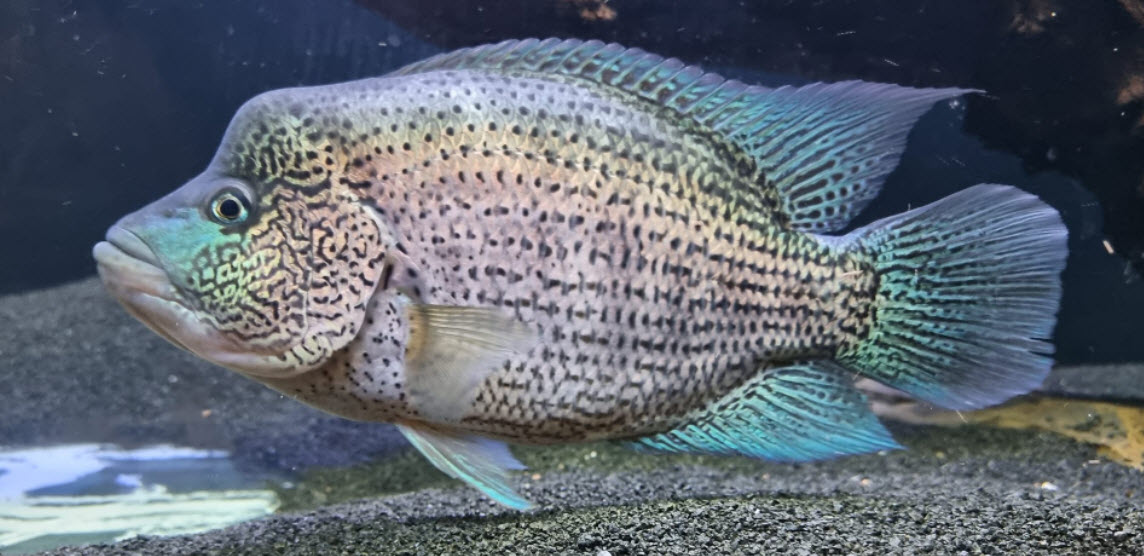
In cold waters tubifex worms can carry a parasite which causes “whirling” disease in cold water fish and this parasite has been reported in wild fish in three northern states. There is no evidence this disease has occurred in warm waters at all, let alone in tropical fish in the aquarium. Tubifex worms will not hurt any fish, contrary to all the claims made against them.
Note it is not recommended to buy tubifex worms live from the fish store. They don’t have pathogens but they do have such critters as snail leeches and flatworms (planaria). And as with ANY frozen food always smell frozen worms. If they smell bad do not use them. ANY frozen food which becomes unfrozen in transit can “go bad” and kill the fish. This spoiled product will smell bad.
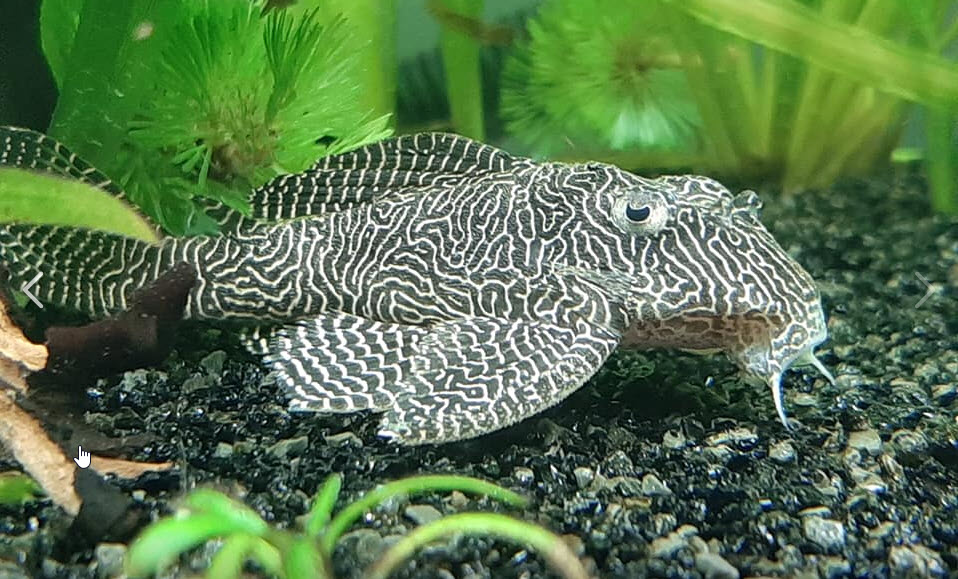
Beef Heart
Many feed their fish beef heart (including Joey, the popular YouTube presenter and author). The big breeders of millions of discus in Southeast Asia find beef heart to be the best food for growing out discus, a known difficult fish. They have done a lot of research to find alternatives to beef heart (such as duck heart and shrimp) as beef heart is very expensive. But beef heart remains the preferred food for these breeders.
But many in social media pan this practice as they say saturated fats in mammalian meat are bad for fish. But heart meat has very little fat. In any case, this ignores the fact that the fat in most fish is roughly 20% saturated, 40% polyunsaturated and 40% monounsaturated. This isn’t much different than beef heart (60% – 20% – 20%).
And saturated fat was only hypothesized to create a problem in some genetically susceptible humans because it coated the arteries and caused heart attacks after many years. Fish don’t live long enough for that to be a problem. The feeding of beef was mentioned in several articles in the books above in a positive light. There were no negative research studies in any of the thirteen books.
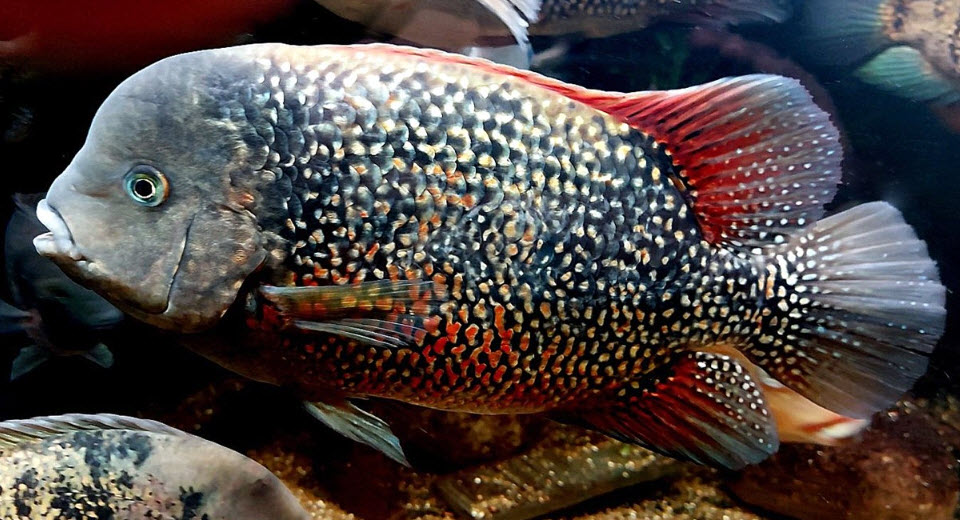
Note that the big German supplier of fish food, Tetra, began a concerted campaign to discredit beef heart some fifty years ago. At that time beef heart was the preferred fish food by the “experts” and was very widely used as fish food. Beef heart was hurting their sales so Tetra invented a bunch of bogus reasons for not using beef heart: “beef heart causes intestinal obstructions”, “beef heart causes blood to congeal in the fish”, “the amino acid balance is incorrect for fish”, etc..
And dozens of Tetra sponsored books and European authors getting hefty fees from Tetra parroted the party line. And you will still see the profit driven mis-information in dozens of articles and well meaning but ill-informed advice on social media.
For Instance Dr. Peter Burgess MSc, Ph.D., of the Aquarium Advisory Service in England, said:
“Liver Damage and Red Meats
The routine of feeding beef heart and other red meats to Cichlids can ultimately give rise to health problems. Poultry meat is also suspect. Red meats, including lean meats such as beef heart, contain the wrong sorts of fats – these harden within the cold-blooded fish, leading to blockages and fatty deposits around the liver.
Also, the relative proportions of amino acids within the mammalian proteins are different to those required by fish. Hence, feeding red meats will cause the cichlid to excrete more nitrogenous (ammonia) wastes, thereby placing an extra burden on the biological filter.”
The huge amount of real research in the thirteen books above say that every word of this quote is incorrect. EVERY WORD!
One YouTube video maker panned the use of beef heart because it was “so low in protein, only 16%”. He then showed a bug bite product that was 50% protein and said this was obviously much better. This well meaning but ill informed video maker was somehow managing to miss the point that beef heart is 71% water. Dry beef heart to become as dry as the bug bites and it becomes 53% protein.
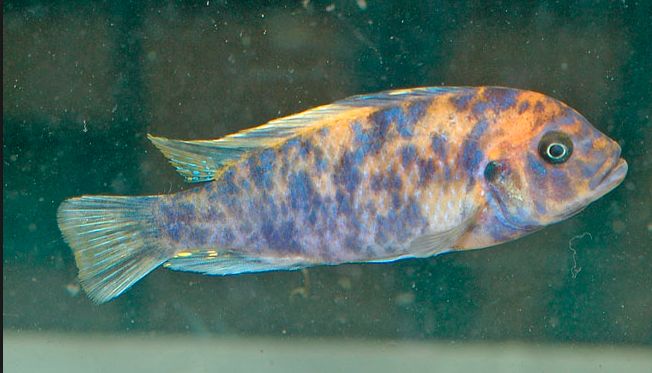
Land Animal Protein
Many others say that any land animal or warm blooded animal (i.e. chickens and cows) produces protein which cannot be digested by fish. This is just incorrect. All animal protein is virtually identical, regardless of whether the animal is from land or the water. Hundreds of tilapia farmers feed their fish ground chicken byproducts. Does one really propose these farmers are feeding their fish food which they cannot digest?
None of the thousands of research studies covered by the books listed above said anything negative about warm blooded animal protein. If one looks on Google Scholar for “effect mammalian feed on fish” you get no science journal article on the subject. There are literally thousands of journal papers on fish nutrition and not one paper about how mammalian feed negatively affects fish in any way. The “problem” is a myth, it doesn’t exist.
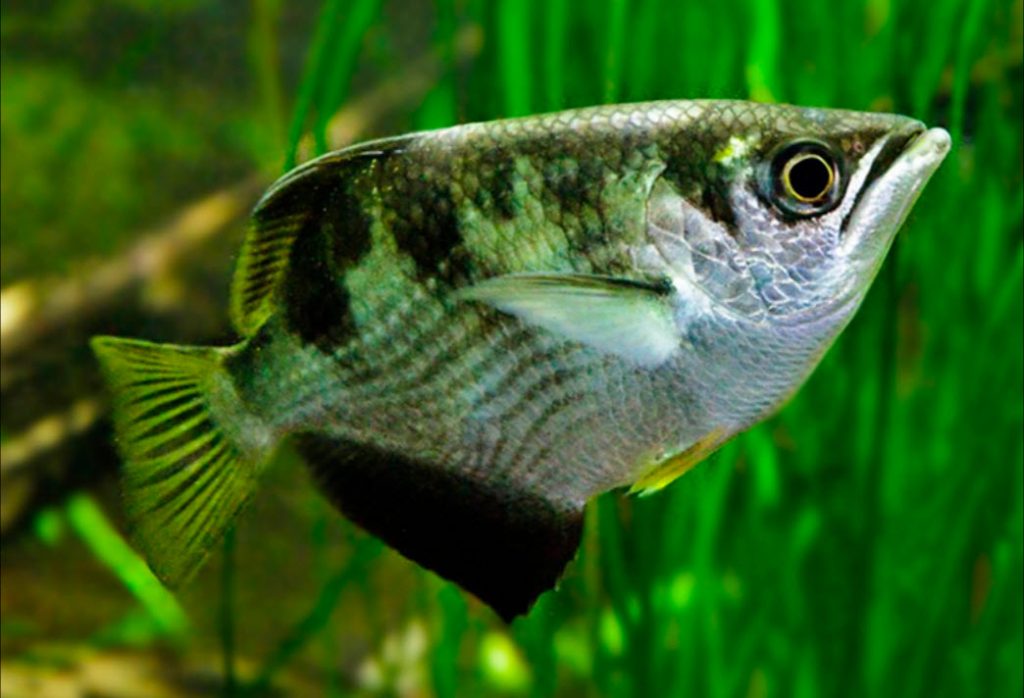
Fat
Many say solid animal fat from warm blooded animals can’t be eaten by fish. The concept that warm-blooded fats are bad for cold blooded fish might have a remote possibility of being true if the digestive processes for fats in animals were a simple transfer of fats from the gut to the bloodstream. It doesn’t work that way! The fats are broken down in the intestines, re-arranged in the liver, and then put into the bloodstream. So called solid saturated fats become liquid unsaturated fats if the liver so decides.
There is no evidence fat is bad for fish. As a matter of fact, there is a lot of evidence fat is a better source of calories for fish than carbohydrates. Some aquaculture research has shown high fat content (15%) in fish food is good for fish growth. Growing tilapia fry are supposed to get at least 15% fat in their food. They generally get this fat from chicken, which can have a high saturated solid fat content.
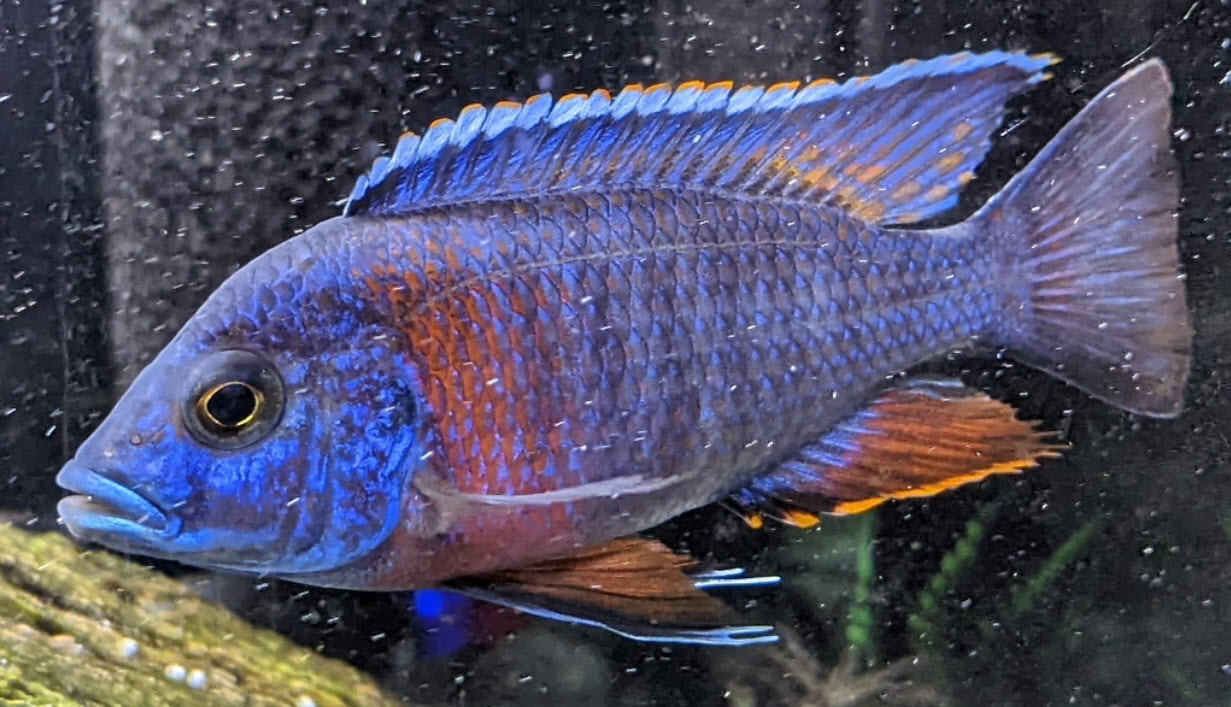
For optimum breeding fish need at least 10% fat in their diet, as fat is required for eggs and sperm. There are many research articles confirming this.
Most fish eat a lot of insects and insect larvae. Insects are a high fat food. Their typical composition is 40% fat, 40% protein and 15% fiber (chitin) by dry weight (it has to be by dry weight!). So high fat diets are quite normal for fish. Krill are 20% fat by dry weight.
There is one piece of research at the University of Florida which said that very high fat content (17% by dry weight) food gave African cichlids fatty livers (“Nutrition for Juvenile African Cichlids: The Effects of Varying Dietary Protein and Energy Levels on Growth Performance and Liver Condition”, Roye, 2004).
Unfortunately this research only looked at 9% fat versus 17% fat. So little can be said about any level between the two. And there was no research cited which linked fatty livers in fish with poor health. That was only hypothesized.
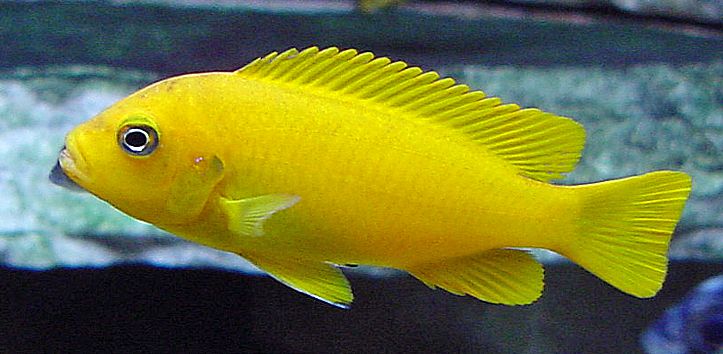
Meat Byproducts
Others are put off by the label “chicken byproducts”. Chicken byproducts are what human typically are loath to consume, the offal (internal organs), head, and feet. These items are actually much richer in minerals like calcium and iron than the rest of the chicken and are good for the fish, not bad for them. And byproducts do not include feathers, contrary to what some uninformed are claiming.
Krill
According to one social “commentator” krill is bad for fish. This “commentator” was found to be a fake account from a fish food manufacturer. When asked to support the comment, the “commentator” referenced “Today’s and Tomorrow’s Feed Ingredients in Norwegian Aquaculture”, Sørensen et. al., 2011:
“Based on the nutrient composition, krill is a promising alternative to fish meal in aqua diets. Partial substitution of fish meal with krill meal have shown improved growth rate in Chinook salmon (25% krill meal) (Anderson, et al., 1997) and Atlantic salmon (Olsen, et al., 2006). However, full replacement of fish meal with krill meal has shown a negative effect on growth performance. This is mainly attributed to the exoskeleton of krill that contains chitin. Several experiments have shown that chitin depress growth (Olsen, et al., 2006; Yoshitomi, et al., 2006; 2007; Hansen, et al., 2010) and have a negative impact on lipid digestibility and amino acids (Hansen, et al., 2010). Removing the exoskeleton from krill (deshelling) before processing will therefore improve nutrient digestibility and growth performance and allows greater inclusion levels in fish feed (Yoshitomi, et al., 2006; Yoshitomi, et al., 2007; Hansen, et al., 2010). Meal made from deshelled krill can fully replace fish meal without negative effects on growth rate in Atlantic salmon (Hansen, et al., 2010) and rainbow trout (Yoshitomi, et al., 2007). Full substitution of fish meal with (whole) krill meal in diets for Atlantic cod did not affect growth performance (Moren et al., 2006).”
So whole krill gave lower “efficiency” than fish meal when it was the sole ingredient in the food. So one fish keeper decided that “based on extensive research”, krill was not as good in fish food as fish meal. Indeed this “commentator” decided feeding fish a food that is mainly krill will kill your fish. It’s called denigrating your competition and is a widespread practice on social media.

Whole krill have chitin exoskeletons. Fish such as salmon, which have no pharyngeal teeth, will have some difficulty (not much!) with their intestines getting through the chitin to the inner protein. Thus the slightly lower efficiency. In fish foods such as Northfin Krill Pro the krill is ground up and readily available for digestion. And cichlids have pharyngeal teeth, which grind up the chitin in whole krill quite effectively.
Krill is an arthropod. More than 80% of all the animals in the world are arthropods. All arthropods have chitin exoskeletons. Krill, mysis, shrimp, crickets, mosquito larvae, crabs, flies, bloodworms, ants, insects etc. are all arthropods with hard outer exoskeletons made of chitin. Arthropods form the basis of the fish food chain in virtually all waters. All fish have evolved ways of coping with chitin in an exoskeleton. So claiming krill is bad for fish is simply incorrect.
After this article was written the social media “commentator” that made the comments about the krill was found to be a fake account from the marketing department of a certain fish food manufacturer. This manufacturer had about eleven such fake accounts putting down any food other than their own and singing the praises of their own brand. We suspect that many of the banned food myths have originated in just such a manner.

“High Thiaminase” Food
Thiaminase is an enzyme found in bottom feeding and cold water fish. The enzyme can destroy one of the B vitamins. The myth goes something like, “if you feed feeder fish like goldfish which have high levels of thiaminase enzyme your fish will get sick or die.” This myth is repeated over and over by the PETA folks who think that using feeder fish like goldfish is cruel and should be made illegal.
There are only a few references to thiaminase in the thirteen books above. The following quote is typical: “Development of Thiamine Deficiencies and Early Mortality Syndrome in Lake Trout by Feeding Experimental and Feral Fish Diets Containing Thiaminase”, Honeyfield et. al. 2011:
“We assessed the effects of each diet on egg thiamine concentration and incidence of an embryonic early mortality syndrome (EMS). In experiment 1, incidence of EMS ranged from 0% to 100%. Significant relationships were found between the incidence of EMS and thiamine. The number of females that produced offspring that died from EMS were low but demonstrated the negative potential if feral lake trout foraged on either 35% or 65% alewives. Depleted egg thiamine and the onset of EMS required diets containing thiaminase for a minimum of 2 years in lake trout initially fully thiamine replete. We conclude that EMS can be caused by extensive feeding on 100% alewives and dietary levels of 35% or greater may prove detrimental to sustainable reproduction of salmonids in the Great Lakes. The data are consistent with that observed in feral lake trout, and it is concluded that EMS is the result of a thiamine deficiency.”
In other words, after two years of being fed a high thiaminase diet, some of the female fish produced eggs which died early. This is just not something to be worried about. There was no article which indicated any health problems with feeding high thiaminase food like feeder goldfish to juvenile or adult fish.

Freeze Dried Food and Expansion
One interesting myth is that freeze dried food will expand in the stomach of the fish and cause bloat. This concept is rather easily disproved.
Take a bunch of freeze dried food. Stuff it tightly into a thimble. Then add water. Most of the time the mass will actually contract in size when it rehydrates. If it does expand the expansion is minor 10% to 20% at the most. So freeze dried, or any dried food can’t hurt any fish. Humans don’t get constipation from eating beef jerky.
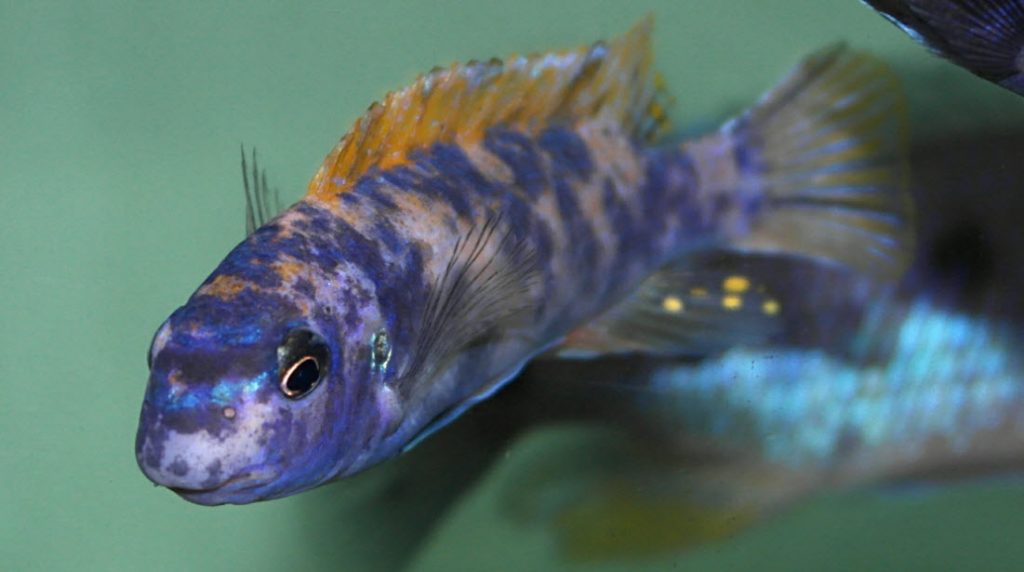
Frozen Food
Fish are cold blooded. What this means is that their body temperature goes up and down as the temperature of the water changes. Take the body temperature of a fish down to 60 or 65 and the fish just shrugs it off. Here is a link all about that ability of fish:
4.8. Stability isn’t Important
Take the temperature of a warm blooded animal like humans down to 65 and the human is dead. Take the temperature of a cold blooded creature like a fish down to 65, even rapidly, has no effect on the fish at all, contrary to popular mythology. So eating a bit of food that is frozen has no effect on a fish.
Again, always smell frozen food. If the frozen food smells “bad” it can kill the fish. If frozen food is unfrozen in transit it can spoil. The toxins produced by spoilage can kill fish.
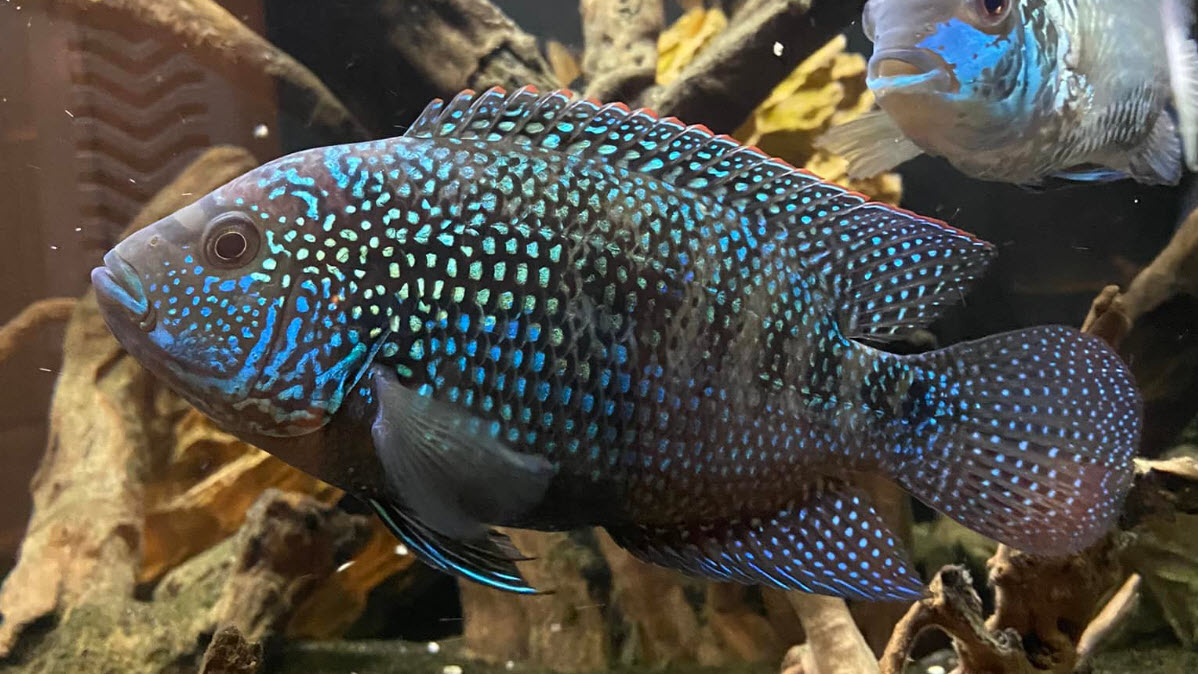
“Sponsored” Books
There is a big problem with the advice about food and banned food given in books whose authors are from Europe. Some large suppliers of fish food in Europe (Tetra being the biggest), “sponsor” the publication of books on aquariums via a variety of means. Tetra used to have it’s own publishing house.
Some of the European authors work directly for large suppliers while still others get speaking fees, “research grants” and other monies from the large suppliers. This means the advice given in the books tends to be very inaccurate.
If a book does not have a listing of the journal articles it used to come to a conclusion about food in the write-up, be very skeptical. And be especially aware if any of the authors of the book are from anywhere in Europe.
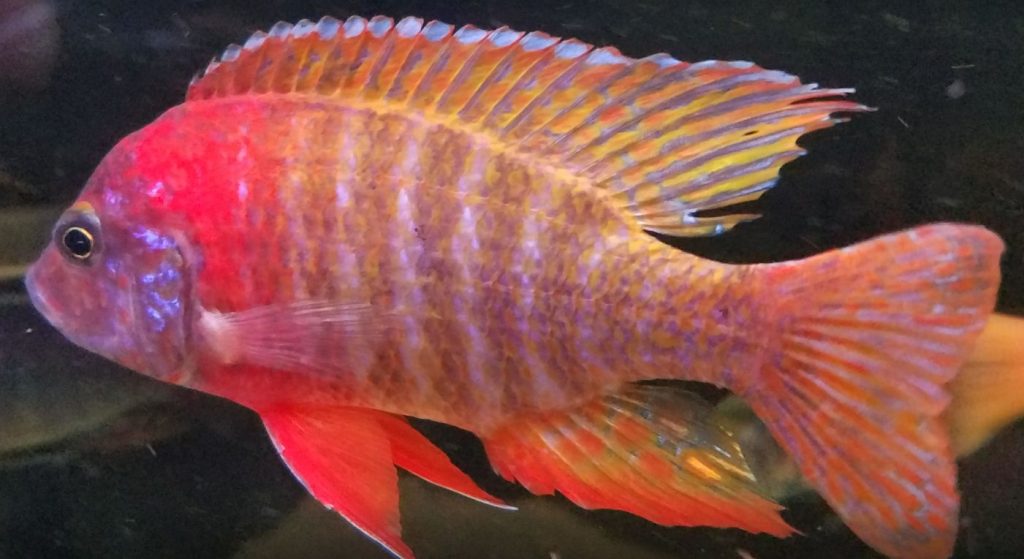
Internet “Reviews”
Some people give great stock in websites which give “reviews” of things like fish foods. All websites which give “reviews” are for-profit websites. Somewhere in the reviews there is a link to an Amazon account where you can buy that food. If you buy the food from the link the website gets a profit. Basically the manufacturers pay the website for their “good reviews”. And these views then get parroted with great authority throughout social media and forums. It is amazing how naïve people are about how the money driven real world of the internet operates.
Fish Meal
To illustrate this profit motive in website reviews here is a quote from a review of fish foods by “The Pet Fish Club” (petfishclub.com). It said:
“A lot of fish foods have “fish meal” as the first ingredient. Under most circumstances, fish meal is mostly leftover of fish parts. E.g., fish skin, fish organs. It is what’s left after the best parts removed for human consumption. Fish meal is in the fish food because it is cheap.
A high-quality fish food always has the word “whole” in the first ingredient. For example, whole salmon, whole shrimp, and whole krill. As the word suggests, “whole salmon” is the whole of a salmon fish. It is far superior to fish meal in term of nutritional value. Same goes for other whole seafood in the ingredients.”
This is SO incorrect, ALL of it. “Fish meal” is ground up whole small marine fish like herring or sardines. The high oil content in these fish has been partially removed to supply the demand for high omega three oil supplements. This reduction in lipid content doesn’t affect the nutritional value of the meal. To say that whole salmon is “far superior to fish meal” is just simply a profit driven lie.
This website was paid to say this. The website had links to a commercial food that had “whole fish” as it’s primary ingredients. Click on the link and buy the food and the website makes a profit.
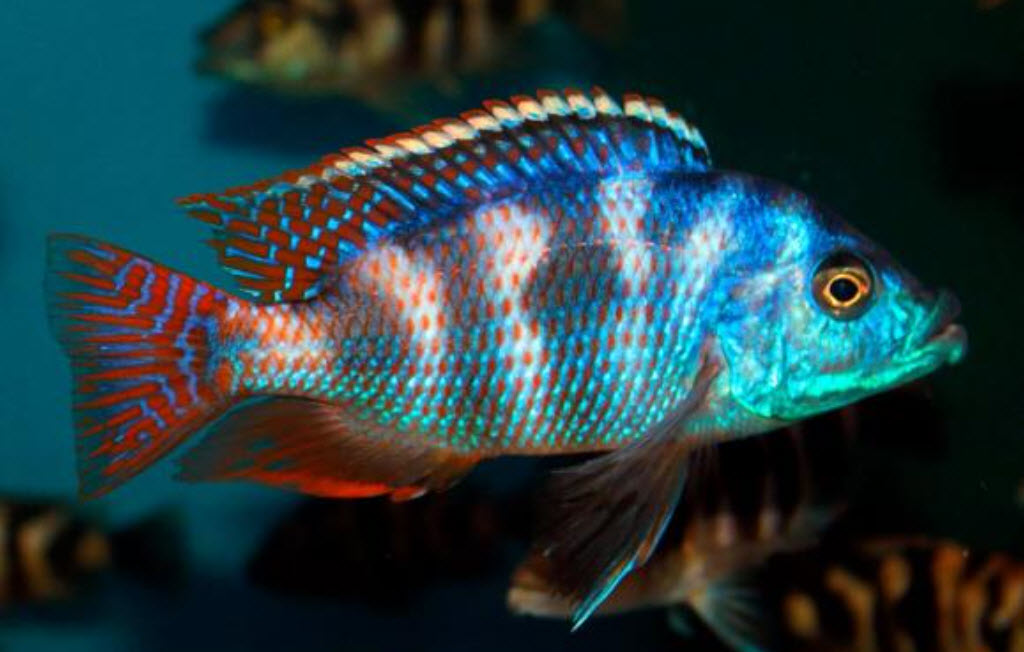
Fish Food Analyses and “Wet” Weight
There is an interesting “myth” that some ingredients and nutritional analyses are based on wet weight (i.e. “whole salmon” consists of fish fillet with 80% water) rather than dry weight. Per the for-profit website Oscarfish.com:
“By law, pet food manufactures are required to list ingredients in order of their weight, meaning the first item listed in the ingredient list should be the largest portion of the product. The second listed ingredient, the second. Etc… But laws do not require the ingredients to be listed in order by their weight in the final product. It only requires them to be listed by their weight as they were introduced into the manufacturing process. This allows pet food manufactures to manipulate an ingredient list via the ordering of ingredients at their wet weight. As an example, a food manufacturer may list “Whole Salmon” as the primary ingredient. However, once dried, as it must be to create a fish flake or pellet, the product will weigh 80% less than it was as a wet product. End result, it may have been the heaviest ingredient going into the manufacturing process but in the final product its weight is substantially less. Almost certainly not the #1 ingredient content of the food yet it is listed in the ingredient ordering that way”.
As is normal in for-profit websites, this is a mix of fact and fiction. The FDA does allow fish food manufacturers to list the ingredients by the weight as introduced into the manufacturing process. But this weight is subject to the profit motive and something called “shipping costs”. Shipping costs can be quite high for some products. Drums of salmon which are 80% water will have several problems:
- 80% water salmon would start decomposing rapidly at room temperature, so the shipping would have to be by expensive refrigerated truck.
- Shipping costs are by weight and no one want to pay for shipping the 80% that is water.
- When these drums are in storage at the fish food manufacturer they would have to be kept refrigerated, which is expensive.
So ALL the ingredients for the fish food will arrive at the manufacturer in dry form (typically 5% to 10% water) and go into the fish food in a dry form as introduced into the manufacturing process.
Once again, this site recommends several commercial fish foods and has links to where you can buy them. Buy through the links and the website gets a profit. For profit sites like this are not reliable sources of information.
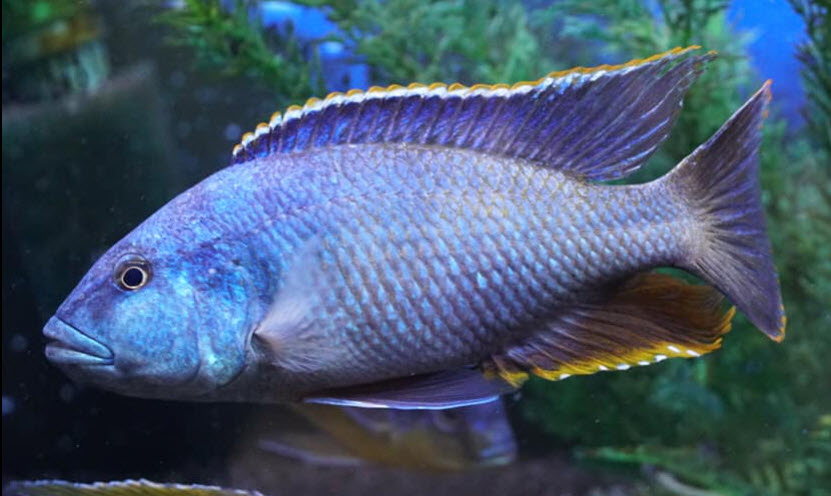
Animal Proteins vary in Nutrition
Another myth is that there is some significant difference in the protein from different sources. From the for-profit website Oscarfish.com:
“There is an order of preference as it relates to meat proteins. Krill and Krill meal are the high end of optimum ingredients, following by Whole Herring Meal, followed by most other types of “Whole Fish Meal”, with acceptable fish being Salmon, Manhaden, Anchovies, Sardines, etc…, followed by meals in the same order that do not include the word “Whole”. Last in preference would be generic fish meal from unknown sources (names of the types of fish are not included)”
This is simply categorically false. Meat proteins are meat proteins. The amino acid analysis of them is virtually identical for all creatures we call “animals”. There is no “high end” animal proteins. Nor do the molecular weights of the animal proteins vary from one animal to another animal. The amino acid content of all animal proteins is virtually identical:

In any case, because fish in an aquarium get so much more food than they would get in the wild the whole concept of a shortage of one ingredient or another becomes moot.

Animal protein is virtually indistinguishable from one species of animal to another. Earthworms, cows, beetle larvae, snails, chickens, mussels, tilapia filets, flies, shrimp, all have almost exactly the same protein amino acid composition and all of these can be eaten with abandonment by both humans and all fish. Indeed, humans in one part of the world or another eat all these items.
It should be noted that there is actually little difference in vegetable and animal proteins, despite all the hype about “essential amino acids”. From a nutritional standpoint plant protein and animal protein are very nearly identical. The concept that plant protein is somehow superior nutritionally than animal protein is simply incorrect propaganda from those espousing the “vegan” concept for humans. To be precise, some juvenile fish can suffer slightly stunted growth if fed exclusively certain cheap plant proteins such as soybean meal. But it is nothing a home aquarist need worry about.
Yet once again, this Oscarfish.com website has links to commercial fish foods. Buy through these links and the website makes a profit.

Goldfish
One shouldn’t use feeder fish, especially goldfish. This is NOT because goldfish are a “high thiaminase” fish or are somehow deficient in one or more required ingredients. And we do not think that feeding goldfish is “cruel” (although the PETA folks will vehemently disagree!). This is a “fish eat fish” world. That is just Mother Nature and it is not “cruel”.
We have stopped using goldfish as food because goldfish are very good “carriers” of disease. The goldfish typically have ich or columnaris and will transfer it to your good fish. They can also have any of dozens of other diseases. It’s just not a good idea.
If you must use feeders, quarantine them for at least four weeks. Treat them prophylactically with Praziquantel and formaldehyde/malachite green in the water and Fenbendazole in the food.

Varying the Diet of the Fish
Even experienced aquarists constantly attribute human feelings to fish: “Just like us, fish enjoy a varied diet”. This is something called “anthropomorphism” and has no scientific basis what-so-ever. There is no evidence fish “enjoy” anything, let alone a varied diet. Most fish eat the same thing day in and day out in the wild. Periphyton is periphyton. If you change a dog’s diet, they get diarrhea.
If changing the meals of fish had any benefit to the fish one of the thousands of articles on fish nutrition in the thirteen books above would have found it. But there are no such recommendations in these thirteen books. All commercial aquaculture fish operations feed the same food every single day. They do not vary the diet of the fish because there is no benefit to it.
And any owner of Oscars will attest that some of them simply do not like their diet changed at all. Oscars are drama queens. If you try a new food with Oscars they will often sulk and mouth the food. Then they spit it out. It is common to hear things like “Started feeding my Oscars krill and they got hole in the head disease. Don’t feed your Oscars krill!“. The Oscars simply spit the ground up krill back into the water because they do not like to have their diet changed. The uneaten krill caused bacteria to proliferate and bacterial toxins caused the hole in the head. Many discus are the same way.
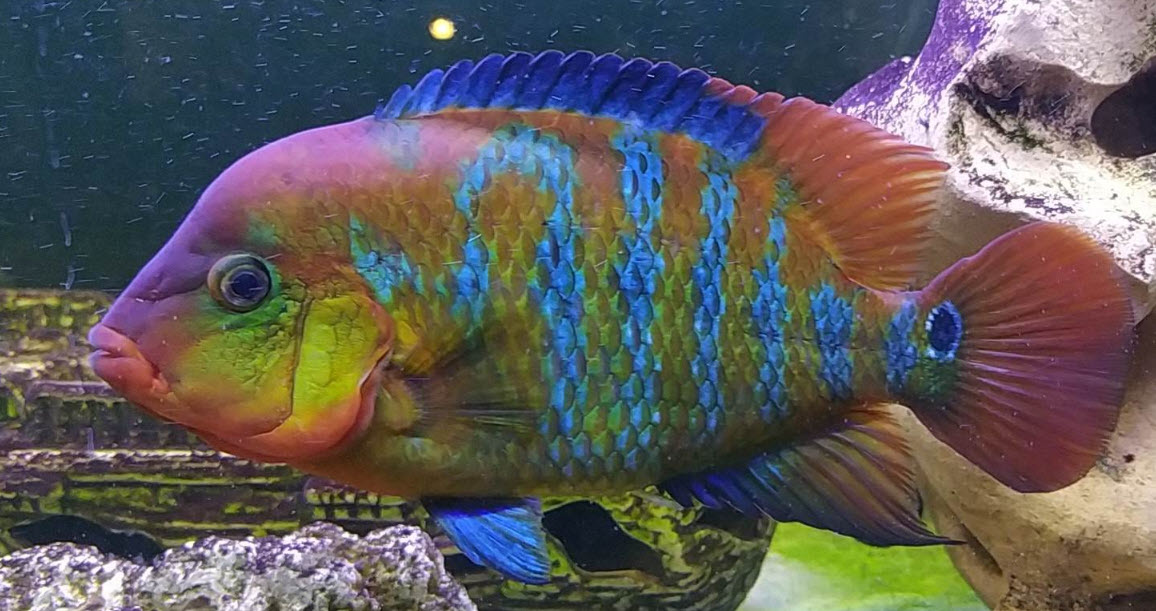
Fish will Starve Before Eating a Food They do not “Like”
There is an interesting myth that fish will die before they will eat a food they don’t “like”. Any fish species that was that particular in it’s food habits probably will have real difficulty surviving in the wild. I’ve had many cichlids refuse to eat a new food for weeks and then finally cave when they got hungry enough. The only fish that I’m aware of that will die before eating some foods are a few puffers, pipefish and eels that require live foods. I.e. the exceptions that prove the rule.

Vitamin Supplements
Vitamin supplements simply shouldn’t be used with fish. All data on all animals, including humans, says that an adequate diet easily satisfies all the vitamin needs of any animal, especially if that diet includes spinach or other green vegetables. There is also a lot of science that says overdoses of some vitamins are harmful. And all commercial fish food manufacturers add vitamins to their fish foods.
There is a myth that says all the vitamins that all fish food manufacturers add to their foods degrade with time and disappear so added vitamins are necessary. Newsflash: most dry vitamins do not significantly degrade with time! There was a drugstore that was remodeled in 2014. It turned out that the drugstore had been remodeled in the 60’s and for some inexplicable reason a whole wall of shelfing of drugs and vitamins had been walled off. A university tested the drugs and the vitamins and they were largely all still perfectly preserved with no degradation apparent. Only those drugs and vitamins in a water solution had degraded.
Some vitamins, such as a form of vitamin C known as “C1”, are not stable and will degrade with time if there is significant moisture and heat. So the ONLY added vitamin I can recommend is vitamin C. But note most all fish can be seen “grazing’ the green algae present in virtually all aquariums. This green algae has high levels of vitamin C. This is why vitamin C deficiency is rare even with poorly stored old food.

Adding “a few drops” of vitamins to a small quantity of fish food is actually very large amounts of vitamins as a percentage of food and could be very detrimental to the fish. How do you think you might fare if you ate a jarful of multivitamins every day? In humans this is guaranteed to produce bad diarrhea along with vitamin toxicity. The main consequence of vitamin D toxicity is a buildup of calcium in the blood (hypercalcemia), which can cause poor appetite, weakness and kidney and liver problems. Vitamin A toxicity can lead to liver and kidney failure. Dropsy or bloat anyone?
If one is adamant about adding vitamins to the food, I first recommend not using liquid vitamins. Liquid vitamins decompose and lose potency relatively rapidly on the shelf. Solid vitamins are much better as they retain their potency on the shelf much better. Take a single high vitamin C human vitamin tablet and dissolve it in one gallon of water. Put some of the resulting solution in a smaller bottle and put the smaller bottle in the refrigerator. Then add no more than one drop of the solution to your fish food.
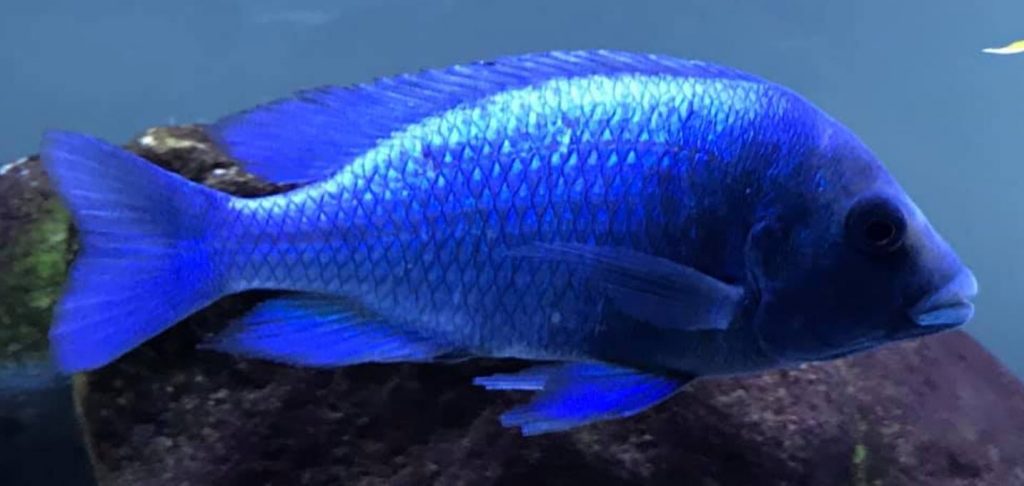
What are “Bad” Foods?
Pelleted foods are superior to flake food. When the fish consume flakes, many very fine particulates are formed. These fine particulates cloud the water. They also result in bacterial blooms which can reduce the immune system health of the fish. In addition, most flake foods (and some pellet and wafer foods) are colored by Azo dyes which don’t decompose in filters and which color the water various colors. Avoid any food with food coloring in the ingredients.
Good Foods
There is a realization in the hobby, led by experienced hobbyists like Tazawa, that roughage is important in the diet of fish. Roughage appears to prevent dropsy, bloat, white poop and “internal parasites”. This roughage can be weekly additions of “zucchini a la fork”, canned green beans, broccoli, cucumber or krill (chitin is great roughage). This list is endless. It makes no difference if the food is cooked or uncooked; fresh, frozen or freeze-dried; green, yellow or orange. Just so long as it has at least 15% vegetable fiber or 15% chitin.
Note that these recommendations have reservations. The evidence of this is anecdotal and thus not scientifically proven. And this website generally avoids anecdotal evidence. But there is a “cause and effect” that is quite firm so it is reasonable to recommend it.
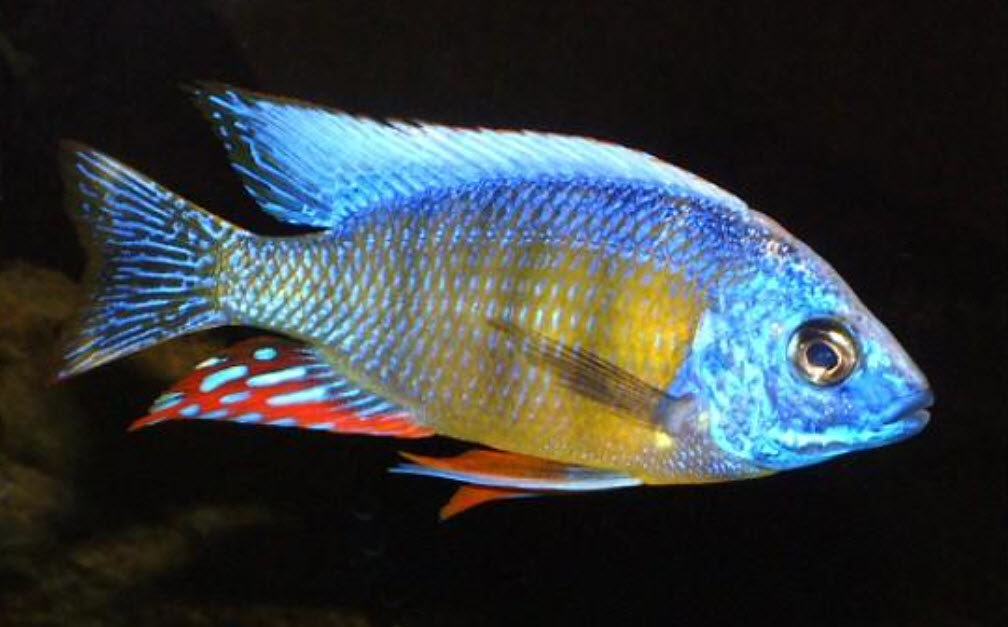
Color Enhancing Foods
It is beneficial to add some color additives to the diets of fish if you have orange or red fish. These colors are produced by a class of compounds called carotenoids. Carotenoids are highly colored compounds produced only by plants. They are the pink color in flamingos and the red and orange color in fish. Fish cannot produce these pigments themselves. They need to get these pigments from their food.
Commercial “color enhancing” foods might add one penny’s worth of something like spirulina to a food, add $2 to the price, and call it “color enhancing”. It is much better to make one’s own color enhancing food.
Whip a whole raw egg together with ¼ teaspoons of spirulina, paprika, astaxanthin, carrot and/or marigold powders (internet purchases). The exact composition and ingredients is unimportant. Just use whatever is readily available in your location. Cook to make a carotenoid rich scrambled egg. Freeze in plastic bags spread out to 1/8-inch thickness. Feed the fish small amounts once a week for truly sparkling red and orange colors.
Note that too much carotenoid can produce very dark fish colors. Also note that some yellow fish turn orange with high carotenoids. But I’ve seen better yellows in my yellow labs with carotenoid in the food. So it is all species dependent.
Note that fish produce the color blue through an optical property called “birefringence”, not via a blue pigment. So there is no color enhancing food for blues.
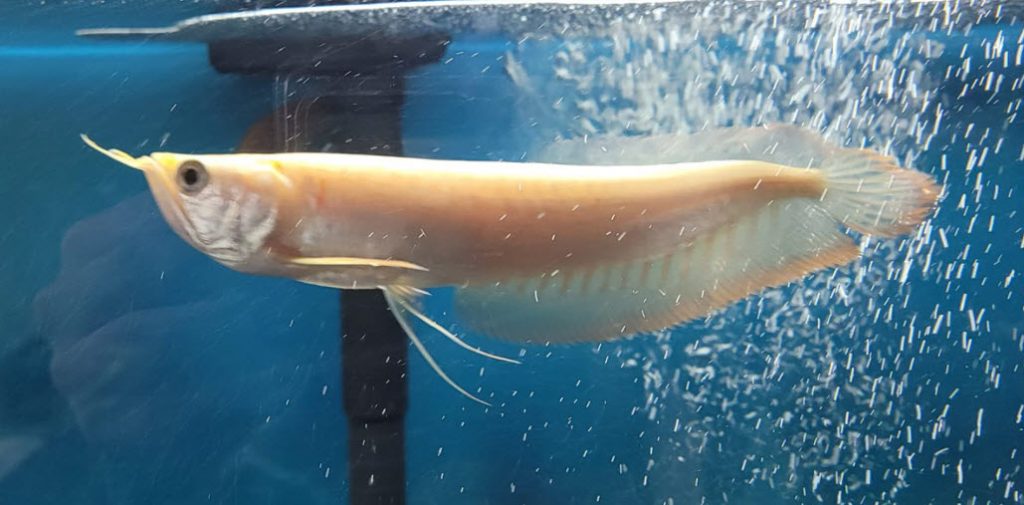
Belief Perseverance Effect
Now having said that many people (actually it is more like ALL people, including the author!) have some very strong and unmovable opinions on food. Even when presented with large numbers of studies showing they are wrong they will rationalize and rationalize some more, rejecting the evidence. This is called “belief perseverance effect” and is something that can’t be fought with science and logic. We won’t try.
.
“Nothing dies harder than a lie that people want to believe” Calvin
.
The myth of a correlation between high protein diets and Malawi Bloat is examined in this link:
3.8. Food and Malawi Bloat
.
Return to Fish Food Menu
.
Aquarium Science Website
The chapters shown below or on the right side in maroon lead to close to 400 articles on all aspects of keeping a freshwater aquarium. These articles have NO links to profit making sites and are thus unbiased in their recommendations, unlike all the for-profit sites you will find with Google. Bookmark and browse!
.

Dave says
In reply to Izzy …. I don’t know. I’ve never had pea puffers.
Izzy Mages says
Are pea puffers one of the fish that will starve before eating something they don’t like?
Winor says
They’re already attacking me Dave… 🙁
I just wish I could see my betta devour those little shits!
Dave says
In reply to Winor …. Don’t do it. The mosquitos will metamorphosize in your aquariums and attack YOU!
Winor says
So if I live in an area with ton of mosquitos during the summer, would it be safe to feed mosquito larva that grow in a dedicated container I leave outside for the fish? I see warnings online advising against it saying I could introduce viruses and parasites.
Tom says
Dave,
I have made the color enhancing fish food your suggested and have started feeding my fish and I think my cherry shrimp are chowing on it too! I did read that it will benefit the shrimp as well, so I’m excited. The main ones I’m hoping will become more intense are some wild-gold cross angelfish and my ember tetras. I also have green fire tetras – hoping the red stripe will intensify.
I wonder if it would make the green on the green fire tetras pop more as well?
Love your site- appreciate the effort you put into it- it has helped me tremendously.
Dave says
In reply to anonymous ….. White worms can be 100% of a fish’s diet with no problems at all.
Anonymous says
regarding picky puffers – is there any evidence that feeding only a single type of live food (specifically only live white worms) will result in deficient nutrition of any kind? the white worms are being fed flake fish food (the only good use for it)
Dave says
In reply to Ben Z …. I’d try a carotenoid rich food. Probably won’t work but worth a try.
B z says
Do you know if carotenoid in the food creates better colours in older clown loaches? My older ones are getting very faded out…